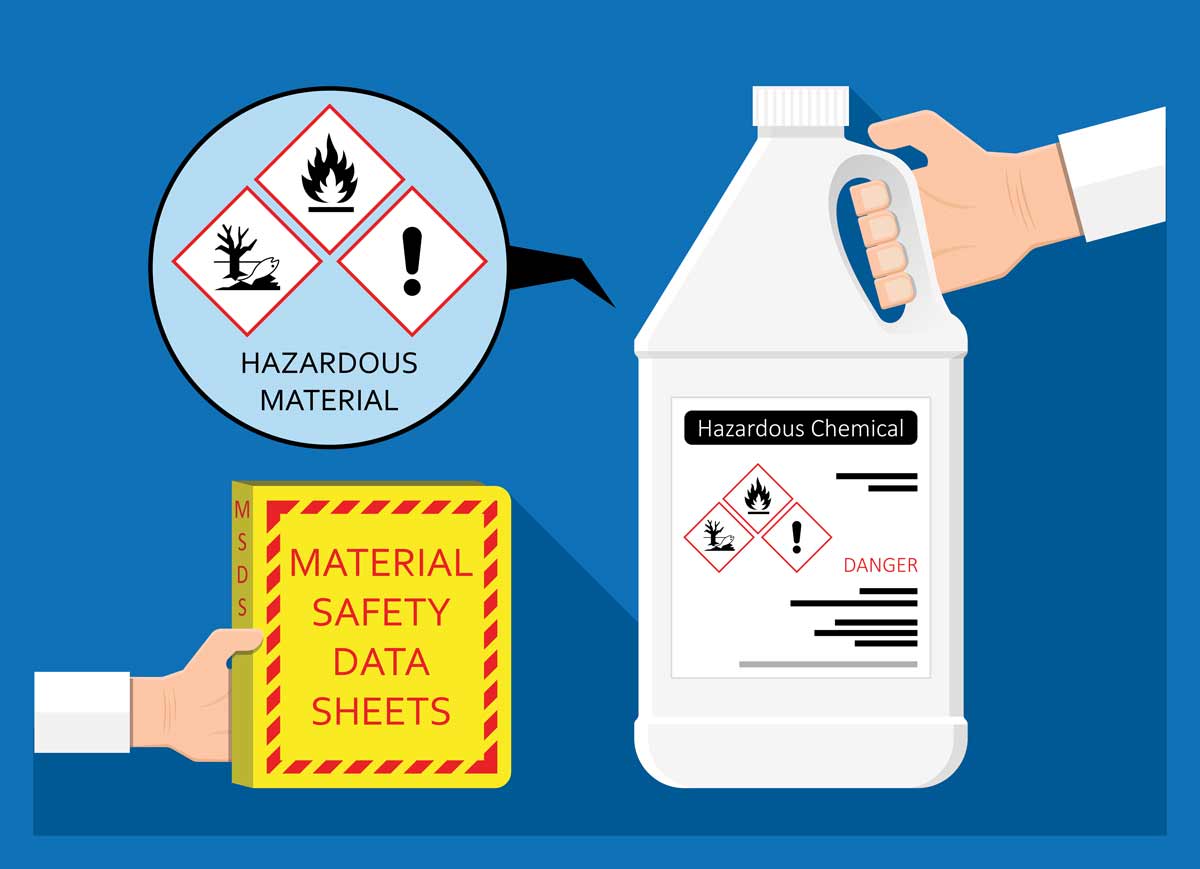
The Occupational Safety and Health Act of 1970 was enacted “to assure safe and healthful working conditions for working men and women; by authorizing enforcement of the standards developed under the Act.” With the Act, the Occupational Safety and Health Administration (“OSHA”) was established as part of the United States Department of Labor.
OSHA established standards to protect workers against hazardous chemical exposure on the jobsite.
HAZARD STANDARD (29 CFR 1910.1200)
In 2020, over 3,000 employers received citations for violating OSHA’s Hazard Communication Standard. The purpose of the hazard communication standard is so that all chemicals produced or imported are classified, and that the information of those classified hazards is transmitted to employers and employees.
Broken down into four main categories, Employers must:
- Ensure the proper chemical labeling.
- Provide safety data sheets.
- Train Employees.
- Create a written hazard communication program.
If an employer fails to follow these safety regulations, it is foreseeable that an employee or others could inhale hazardous material or come into physical bodily contact with the chemicals themselves. These instances could cause any form of physical or health hazard, including dangerous work environments, physical burns or deformities, or asphyxiation resulting in severe bodily injury or wrongful death.
In construction zones with multiple employers at work, the additional requirements are:
- The methods of each employer must be provided to the other employers for on-site access to safety data sheets for each hazardous chemical the other employer’s employees may be exposed to while working.
- The methods each employer will use to inform other employers of the precautionary measures that need to be taken to protect employees, both during normal operation and foreseeable emergencies.
- The methods each employer will use to inform other employers of the labeling system used in the workplace.
- The employer must make the written hazard communication program available, upon request, to employees or those who represent them.
When employers ignore OSHA’s safety standards, it is predictable that workers will suffer serious injury or death. When workers suffer injuries on the jobsite, those people in charge of safety at the jobsite may be responsible for the consequences of failing to protect workers from these foreseeable dangers.
If you have questions/concerns regarding unsafe hazard communication at the jobsite that result in serious injury, you should consult a lawyer experienced in handling jobsite injury cases. For questions, please contact one of the experienced lawyers at DILLER LAW, PC.
